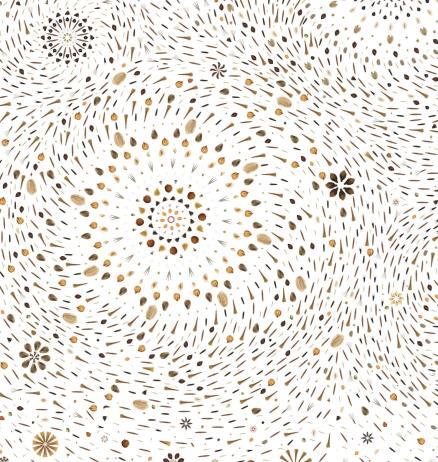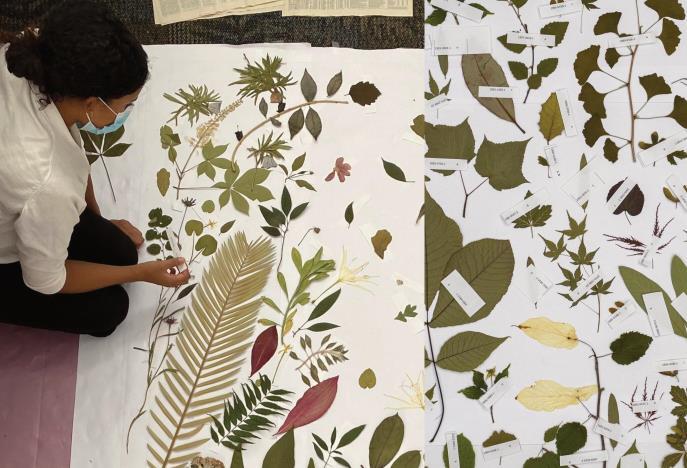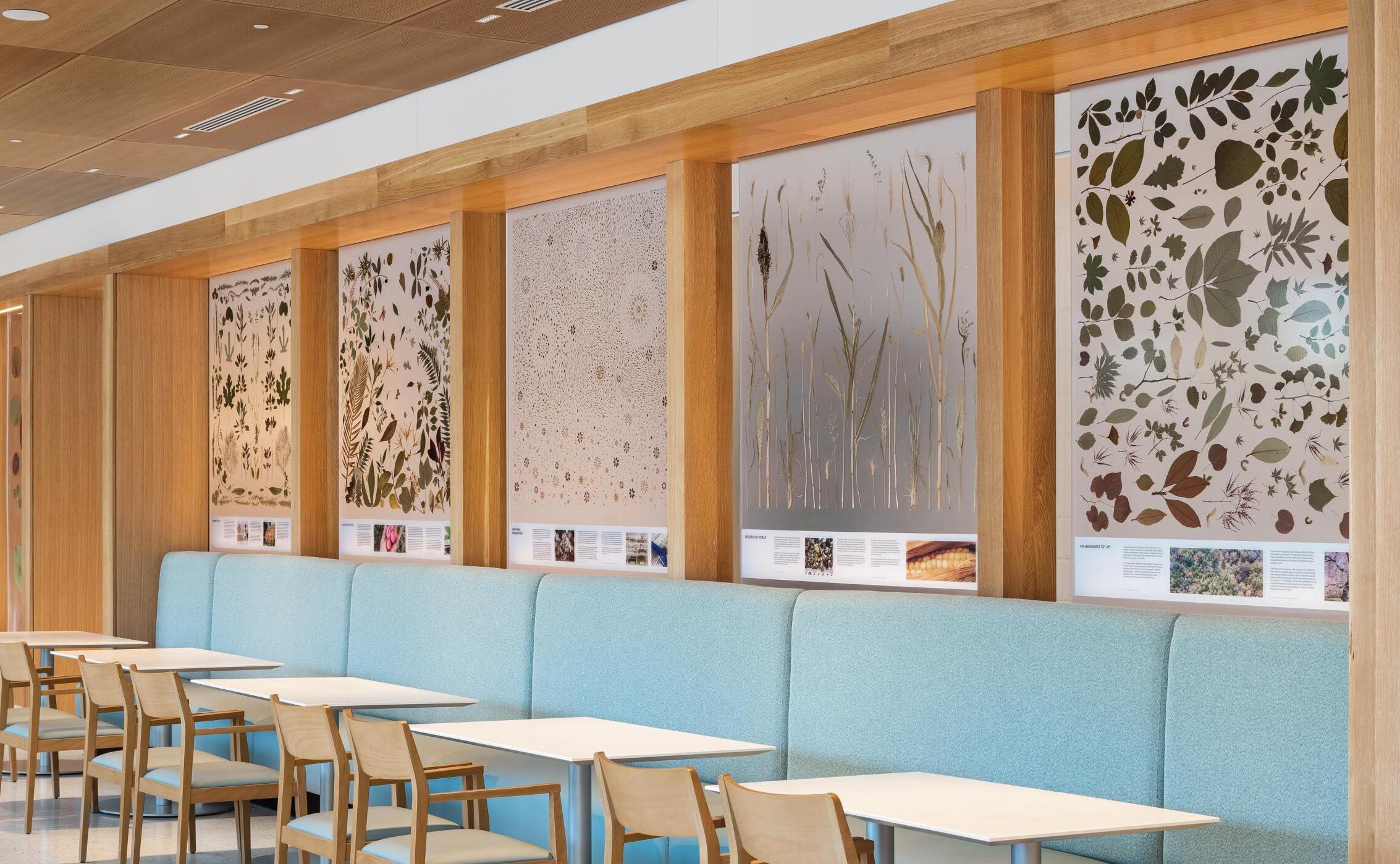
3 minute read
ArbolopeStudio
The Missouri Botanical Garden is the United States’ oldest botanical garden in continuous operation and a global leader in plant science research. Entering a new era, the Garden engaged a collaborative team to design a new visitor center–the primary gateway for more than one million annual visitors. Within the new Visitor Center is the Sassafras Cafe, the Garden’s main eatery. To amplify the Garden’s emphasis on species diversity, the Garden’s Horticultural department commissioned the Landscape Architect (LA) to design a suite of permanent artworks for display in the Cafe, simultaneously providing an inspiring backdrop for visitors and showcasing the Garden’s history, research, and collections. This dual role - to inspire and educate - became the core mission of the project. It was determined that the most effective way to produce this artwork while still allowing for selective translucency, would be to encase plant specimens within a series of glass and resin panels. These panels could then be used as room dividers within the Cafe interior. The Garden Horticultural Staff was tasked with collecting and drying plant specimens from across the Garden, which the LA then used, along with digital scans from the Garden's Herbarium, to create a suite of 9 panel tableaus. Each panel graphically interprets a specific research theme or garden typology. A speciality fabricator then used a proprietary process to fuse and encase the plants and prints within the resin and glass.
Tree Diversity
Advertisement
Organizing leaves from a number of rare and native deciduous trees into horizontal organized strata to form a gradation of color from green to gold to brown to red, this panel explores both the cyclical quality of color change in a deciduous forest, as well as the long-term formation of soil within a layered forest floor.
The Herb Garden
Referencing the symmetrical geometries of a traditional English walled herb garden, the dried specimens of various herbs and edible plants are organized in a patterned, planometric style, highlighting the formal arrangement of species in relation to each other and creating a composition that is graphic yet spatial.
Rare Plants
Utilizing flowers and leaves from rare plants throughout the Garden’s active greenhouses, this panel was designed to evoke a sense of wonder and discovery - reminiscent of the feeling scientists might get working in the field. The layout is designed to perspectivally place the viewer at the center of a rich, dense and wild ecosystem.
Wild Crop Relatives
Taking advantage of tall stalks and thin leaves, this panel was designed to celebrate the height, vertically, and density of grasses and cereals, and evoke a sense of walking through a field or prairie.
Seed Diversity
This panel, which took over 3 months to complete, features large fractal-inspired forms made up of over 5,000 individually placed swirling seeds. The result is a gestural, almost painterly artwork, evoking the way that wind can disperse and carry seeds across the landscape.
The Herbarium

Herbarium Specimens are used in a number of key ways at the Garden, most notably, they represent the official “Type Catalog”, or record of plants as they are discovered, collected and named. The paper backgrounds that the specimens were taped to were digitally removed, with care taken to retain tape and other connective visual elements, stamps, and handwritten notes. Visitors standing in front of this panel get a uniquely immersive view of historic plant specimens from research areas around the globe.
Missouri Grapevine Triptych
The Garden played a central role in the use of Missouri grapevine rootstock to save the French wine industry. This panel was created by stitching together hi-res scans of Herbarium grapevine specimens, forming a vineyard garden layout. Underneath the specimen images are frosted reproductions of historic woodcuts depicting the harvesting of grapes. Together, the specimens and woodcuts allude to the story of winemaking in America's oldest certified “Viticultural Area”. Unique in its use of art to facilitate science communication, the Specimen Panels at the Missouri Botanical Garden are already a visitor favorite, due in large part to their ability to function as art, science, education and communication at different distances. Passersby see patterns of color, texture and herbaceous shapes, while those sitting at the cafe booths or standing in line to order can see the venation of the leaves and read the informational placards underneath each panel. In this way, the panels mirror the experience of visiting the Garden (and other landscape architectural spaces) – providing curated layers of experience and embedded meaning and fostering an appreciation for our broader ecosystem and environment.
JACK C. TAYLOR VISITOR CENTER SPECIMEN PANELS











